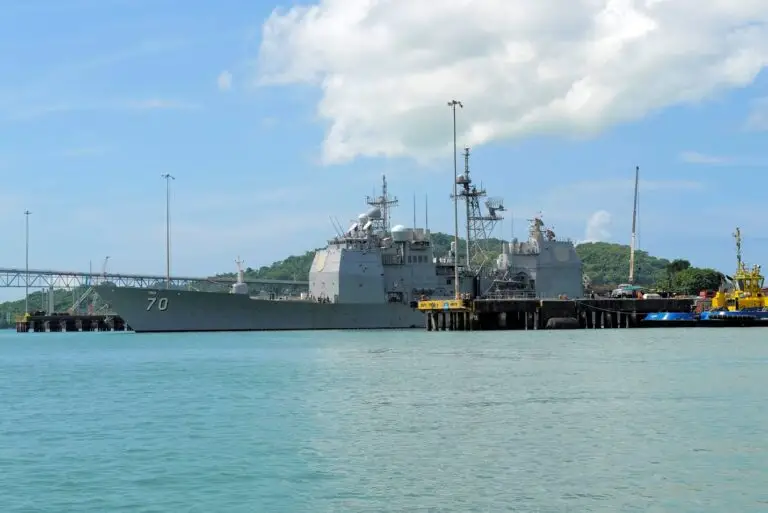PANAMA CITY — Under the glow of canal floodlights and the quiet churn of steel and water, a U.S. Navy warship carved its way through the Isthmus of Panama on Friday night. The vessel, a guided-missile cruiser from the Pacific fleet, was sighted entering the Panama Canal’s western locks around 9:30 p.m., headed for the Caribbean Sea — a maneuver that has sparked geopolitical murmurs across Latin America.
The timing is no coincidence. This movement comes just days after Washington authorized a naval presence in the southern Caribbean, positioning its assets uncomfortably close to Venezuela’s coastline. Officially dubbed a counternarcotics initiative, the deployment arrives in lockstep with renewed pressure from the U.S. administration on Venezuelan President Nicolás Maduro — whom Washington accuses of turning his government into a cartel-run state.
From the sidewalks of Panama City, the sight of the 9,800-ton cruiser slipping silently through the canal evoked surprise among onlookers, many unaware of the vessel’s arrival until it loomed above them. “I didn’t expect to see something like that tonight,” said a bystander snapping photos near the canal’s Miraflores Locks.
Behind the scenes, tensions have accelerated.
In Caracas, the Maduro government has retaliated rhetorically and militarily — mobilizing 15,000 troops to its western frontier with Colombia and declaring new maritime patrol operations involving drones and navy vessels. In a speech earlier this week, Maduro alleged U.S. intentions to destabilize his government and boasted that four million civilian militia members were on standby to defend Venezuela’s sovereignty.
Though U.S. officials insist the warships are focused solely on curbing drug trafficking in the region, few regional analysts believe the timing is divorced from political messaging. Especially with Washington doubling the reward for Maduro’s capture to a staggering $50 million.
As the USS Lake Erie — the warship in question — completes its transit from the Pacific basin to the Atlantic corridor, observers are left wondering: Is this simply a patrol mission? Or a strategic chess move meant to remind Venezuela that the U.S. is watching — and close?
For now, no official threat of invasion has been issued. But with warships skimming along the edge of Venezuelan waters and military mobilizations mounting on both sides, the Caribbean theater has suddenly become far more than a tourist playground.
A new line in the sand is being drawn — not with speeches, but with ships.






